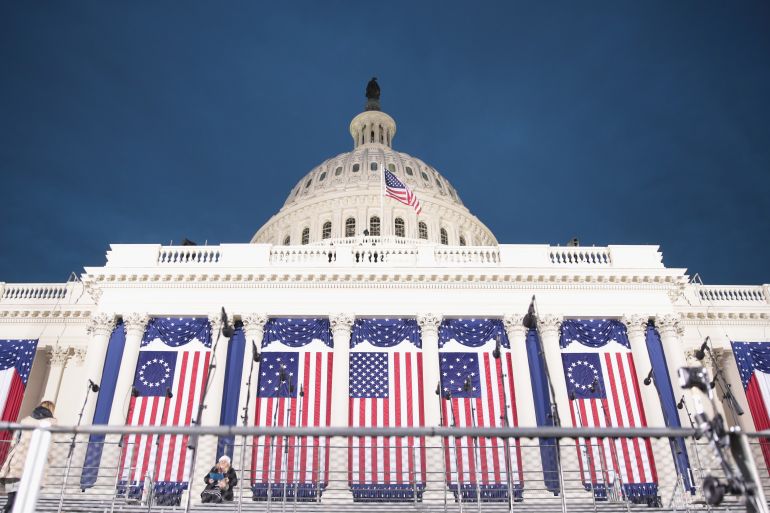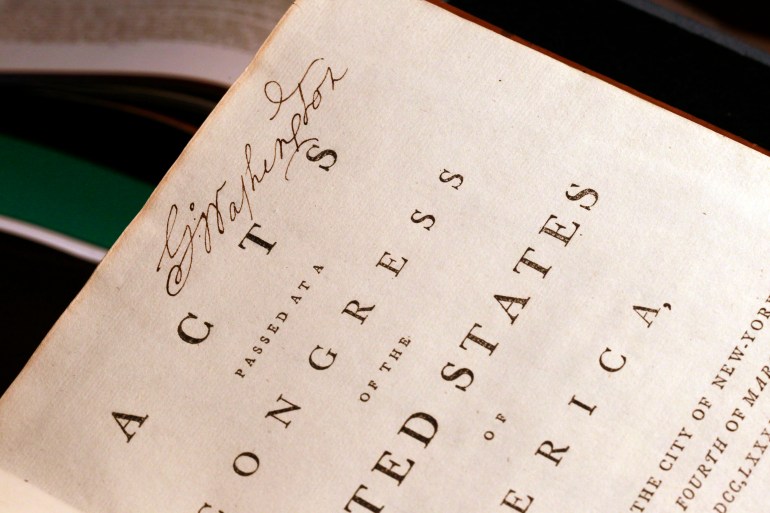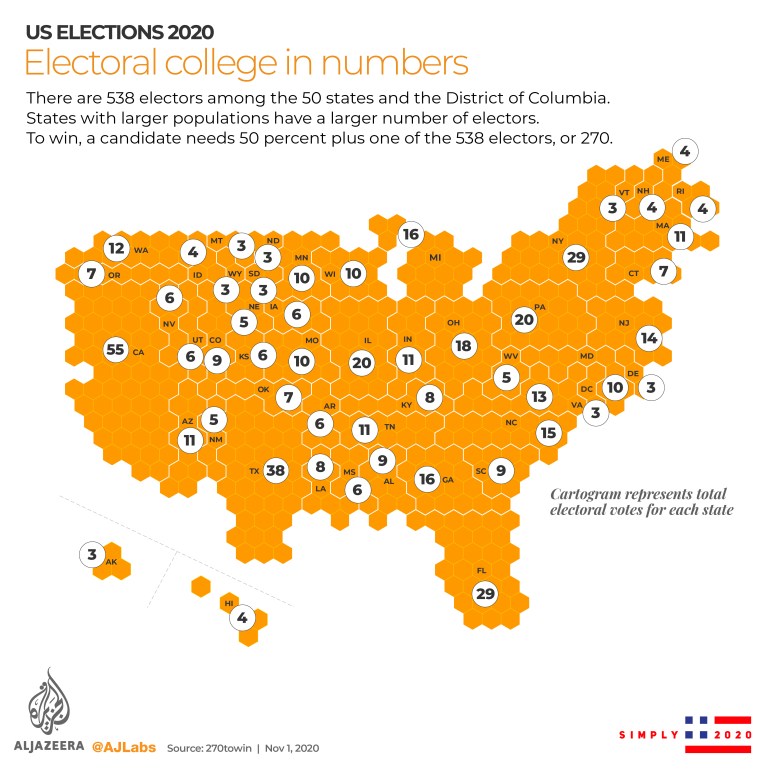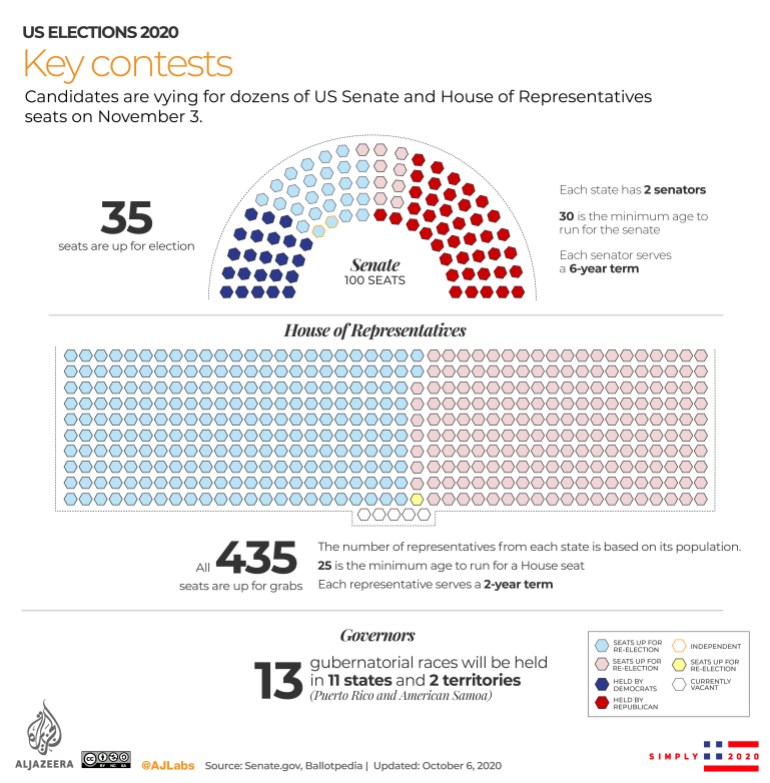How does the US election work?
Elections in the US can be difficult to understand. We will help you sort through the sometimes confusing process.

It is Election Day in the United States and, if all goes according to plan, Americans will elect a president, as well as thousands of federal, state and local officials.
At the finish line of a long campaign that has been directly affected by a pandemic and its economic fallout, racial justice protests and an endless list of political developments, the scene is set for voters to make their final decision. Well, those voters who have not yet voted.
Keep reading
list of 4 itemsUS election: Donald Trump’s closest 2016 victories
Will the final day of the US campaign sway the vote?
Why winning the US popular vote doesn’t ensure victory
A record number of Americans – about 100 million – have voted already in person or by mail-in ballot representing 72 percent of the total overall (early and Election Day) turnout in 2016. Political observers are wondering how many more voters are yet to vote, who has waited until today, where they are and who they are voting for.
The answers to those questions will become clear after the polls close and the count comes in. Until then, we will answer some other questions about US elections:
Why is Election Day today?
Congress designated the first Tuesday after the first Monday in November as Election Day back in 1845.
From the nation’s founding in 1789 through 1845, there was no designated date for elections and states scheduled various election dates throughout the fall. The only deadline on the books for federal elections was a Constitutionally-mandated date in December when the Electoral College must meet to vote for president.
Why a Tuesday in November? It has been explained that since America was mainly an agrarian society back in 1845, the first week in November was a period when farmers’ harvests were completed but before threats of severe winter weather could prevent them from travelling to town to vote. Tuesday was chosen to give those out-of-town farmers time to travel to and from voting centres without encroaching on traditional Sunday worship or rest time.

What is the Electoral College?
America’s founders deliberately designed it so voters do not directly elect the president, unlike members of the US Congress, who are directly elected.
In practice, what this means is that voters in each US state are voting for a slate of “electors”, who, after the votes are counted and certified, are pledged to vote for a presidential and vice presidential candidate.
The system makes it possible for a candidate to win the nationwide popular vote but lose in the Electoral College, something that has happened five times in US history, most recently in 2016 when Donald Trump defeated Hillary Clinton, despite receiving almost three million fewer votes.
More on the Electoral College here.
More on Trump and Biden’s path to an Electoral College victory here.

Which states should we be watching?
There are a dozen or so “battleground states”, states where it is unclear which candidate will emerge victorious. These states are where the presidential campaigns spent most of their money on television and digital advertising as well as where they focused most of their campaign travel.
Al Jazeera has reporters in five key battlegrounds and you can read their overviews of those states here: Arizona, Florida, North Carolina, Pennsylvania, Wisconsin.
What time will results come in?
The first polls close at 7pm Eastern Standard Time (00:00 GMT) and the most non-competitive states whose polls have closed will likely be called at that hour. As for the final projection of a winner, that is unlikely to come before 11pm EST (04:00 GMT) at the very earliest.
More here on the timing of how a presidential race is called.
What else is on the ballot today?
In addition to voting for president, Americans will also choose candidates in various federal, state and local elections.
Among the federal races are elections for the US House and US Senate, the two bodies that make up the federal legislature known as the US Congress.
Republicans control the 100-member US Senate and their majority is at stake amid the 35 seats up for election this year.
More on why the US Senate races matter here.
All 435 seats in the US House are up for election as they are every two years and it is widely expected that Democrats will maintain their majority in that chamber.
Here are the competitive House races we are watching as well as some House races featuring Muslim and Arab-American candidates.

